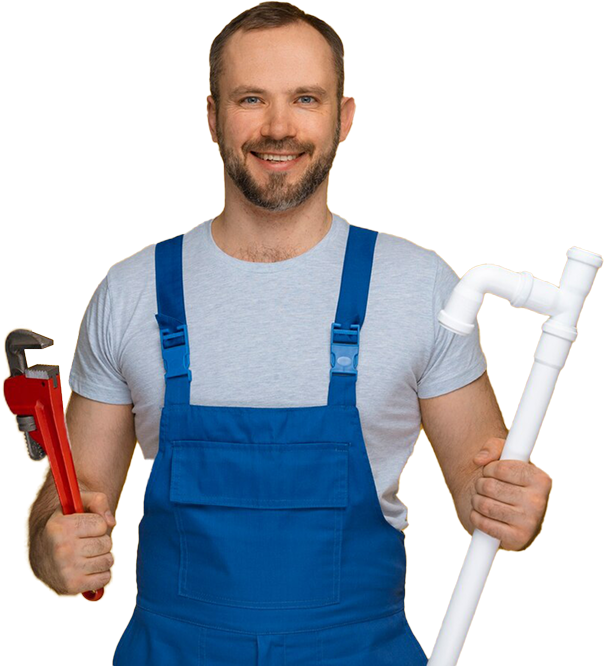Plumbing leaks often start small but can quickly escalate into significant water damage, mold growth, and costly repairs if they go unnoticed. This guide explains what constitutes a plumbing leak, why early detection prevents home water damage and mold, and how combining simple homeowner checks with professional tools uncovers problems before they spread. You will learn the common signs of leaks, step-by-step DIY tests, how to identify different leak types (including slab and hidden wall leaks), when to call a pro, and practical prevention strategies that reduce long-term risk. The article uses clear steps, comparison tables, and checklists so you can act quickly when suspicion arises and understand the limits of DIY methods.
Iron Wrench Plumbing, serving the Chicagoland area, offers certified plumbers and 24/7 emergency response for urgent leak scenarios; this local presence is noted here as a credibility signal while the guide focuses primarily on practical detection and prevention techniques homeowners can use first. Their emphasis on fast response and customer satisfaction complements the guidance below, which explains when and how professional intervention matters.
What Are the Common Signs of Water Leaks in Your Home?
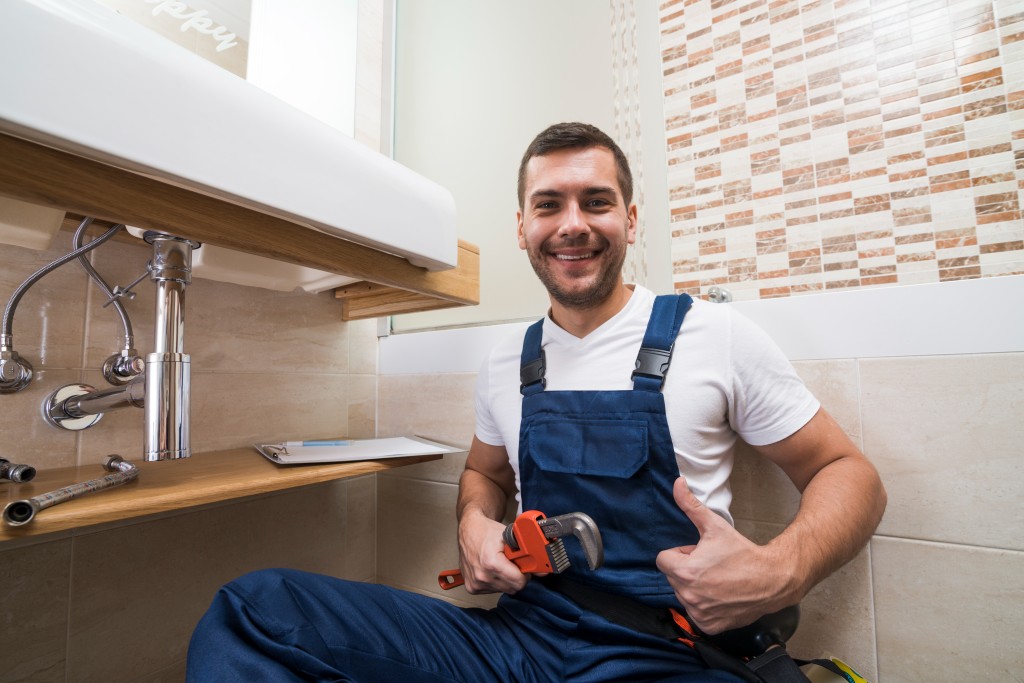
A plumbing leak is any unintended escape of water from supply pipes, drain lines, fixtures, or appliances that can cause material damage and promote mold growth. Leaks work by degrading building materials and increasing humidity; spotting early indicators reduces repair scope and insurance complications. This section lists the visual, odor, auditory, and usage signs that most reliably indicate a current leak and explains why each symptom matters for immediate action. Recognizing these signals helps homeowners decide whether a DIY test is appropriate or if professional leak detection is required.
Homeowners can scan their property for clear visual cues, strange smells, and unusual sounds that point to hidden water. Below is a concise list of the most common signs to check quickly and regularly.
- High or unexplained increase in your water bill indicates undetected usage or continuous flow from a leak.
- Visible stains on ceilings, walls, or floors are evidence of prolonged moisture intrusion.
- Musty or moldy odors inside walls or closets suggest unseen moisture enabling mold growth.
- Warped floors, peeling paint, or bubbling baseboards show material degradation from persistent wetting.
These signs form a prioritized checklist for initial assessment; if you find multiple indicators, the next step is focused testing such as a meter check or localized inspection to confirm a leak and narrow its location.
How Can You Recognize Visual and Odor Indicators of Leaks?
Visual and odor cues are often the earliest tangible evidence of a leak because water alters materials and fosters microbial growth. Common visual indicators include discolored ceiling or wall patches, plaster or drywall soft spots, and floorboards that buckle or separate; these occur because water changes material density and weakens adhesives. Odor indicators—persistent musty smells or mildew near cabinets, behind appliances, or inside closets—arise when mold colonies exploit hidden dampness, signaling that moisture is present long enough for biological activity. When you observe these signs, document locations, take photos for any potential insurance claim, and limit affected area use while you move to diagnostic steps that can pinpoint the source.
Visual and odor detection should lead you to auditory and usage checks, which often confirm whether the issue is active or historical and guide the type of diagnostic test to run next.
What Auditory and Usage Signs Suggest a Hidden Leak?
Auditory and usage signs indicate active water movement where it shouldn’t be, and they are especially helpful for locating hidden leaks inside walls or under floors. Common auditory cues include steady dripping, hissing, or running water sounds when fixtures are off; these noises often increase when you are quiet and can be localized by listening near walls, ceilings, baseboards, and the water meter. Usage indicators include unexplained high water bills, sudden drops in water pressure, or toilets that run continuously without being flushed. To verify, isolate fixtures by shutting off valves and re-check the water meter or listen again; persistence of noise or meter movement with all fixtures off strongly suggests a hidden supply-line leak that warrants professional diagnostics.
These auditory and usage checks orient your DIY testing strategy and determine whether non-invasive tools like acoustic listening are likely to succeed or if advanced professional methods will be needed.
How Do You Perform DIY Leak Detection Tests at Home?
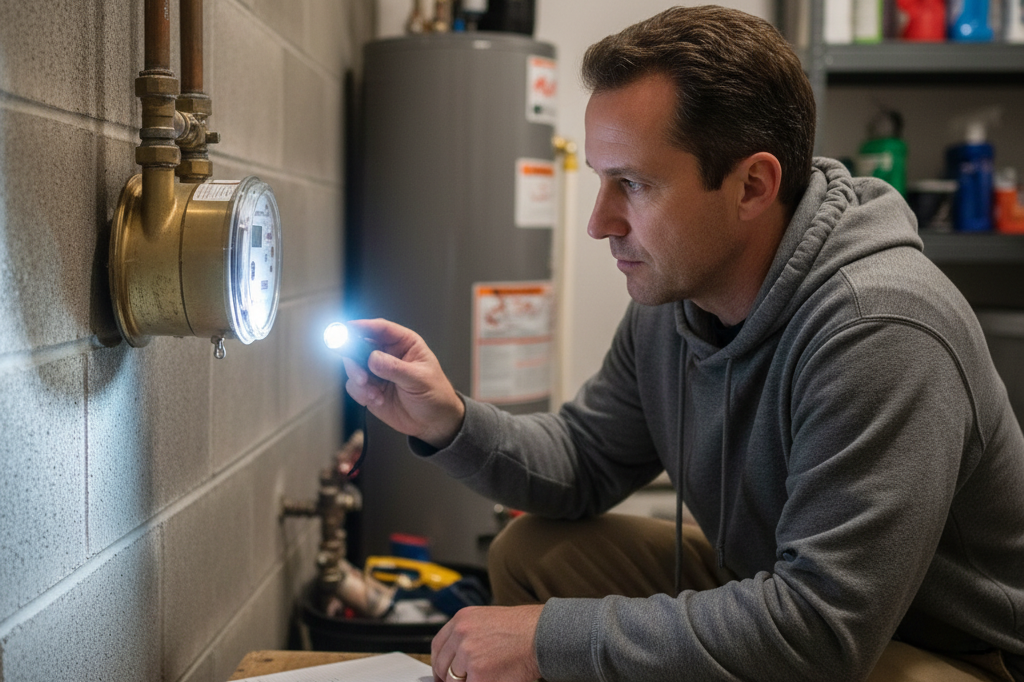
DIY tests help confirm a leak exists and sometimes narrow its location using simple tools and systematic checks, allowing homeowners to triage whether professional help is necessary. These DIY methods range from reading the water meter to visual dye tests for toilets and basic pressure and fixture isolation procedures. Each method has strengths and limits; knowing what a test can and cannot detect prevents unnecessary invasive work and helps you communicate accurate findings to a plumber if escalation is required. The tests below are ordered from non-invasive to moderately invasive and are suitable for most homeowners.
Follow these numbered steps for a reliable water meter test to determine if an active leak is present.
- Locate your water meter and record the current reading; ensure all water-using appliances and fixtures are off.
- Avoid any water use for 1–2 hours while you observe the meter for movement; even small continuous movement indicates a leak.
- If the meter moves, shut off the main valve and re-check; continued movement after main shut-off points to a leak between the meter and the shut-off or in the meter assembly.
- Note the meter reading and repeat overnight for a definitive check; document readings with timestamps to provide clear evidence for professionals or the utility provider.
This water meter procedure isolates continuous loss and helps distinguish between appliance leaks and supply-line leaks, which informs whether to proceed with toilet dye tests or call for professional detection.
How to Use the Water Meter Test to Find Plumbing Leaks?
The water meter test detects continuous flow by measuring whether the meter changes when household water use is halted, and it identifies active leaks by comparing sequential readings. Begin by turning off all indoor and outdoor water sources, including automatic irrigation, then record the meter value; wait at least one hour in a no-use period and re-record. If the reading increases, that indicates water is moving through the system when it should not—often a supply-line or underground leak. The meter test is sensitive to continuous flow but may not catch intermittent leaks or slow seepage, so follow-up with targeted inspections of toilets, hose bibs, and appliances if the meter indicates loss.
After the meter check, the natural next step is targeted fixture tests such as the toilet food coloring test to identify common sources of invisible water loss.
What Is the Food Coloring Test for Toilet Leak Detection?
The food coloring test is a simple way to confirm a leaking toilet flapper or fill valve by detecting color movement from the tank to the bowl without flushing. To perform the test, remove the tank lid, add a few drops of food coloring to the tank water, and wait 10–15 minutes without using the toilet; if colored water appears in the bowl, the flapper or flush valve is leaking. This test helps homeowners identify a very common source of hidden water loss that can significantly increase bills if left unchecked. Many toilet leaks are repairable with a new flapper or adjustment to the fill valve, but persistent or large leaks that don’t respond to simple fixes should prompt professional diagnosis.
Confirming a toilet leak helps prioritize repairs and prevents unnecessary invasive inspection for other leak types, guiding whether more advanced detection methods are needed.
What Are the Different Types of Plumbing Leaks and Their Challenges?

Plumbing leaks occur in distinct contexts—hidden wall leaks, slab leaks, underground pipe failures, toilet leaks, and water heater or fixture leaks—and each type presents unique detection and repair challenges. The difficulty of locating and fixing a leak depends on accessibility, pipe material, and whether the leak is intermittent or continuous. Understanding these types helps homeowners and professionals choose appropriate diagnostic technology and estimate potential repair invasiveness and cost implications. The table below compares the main leak categories to clarify urgency and expected outcomes.
Different leak types vary in detectability and potential for damage:
| Leak Type | Detection Difficulty | Common Signs / Cost Implications |
|---|---|---|
| Hidden wall leak | Moderate to high | Stains, mold, musty odor; may require wall access for repair—moderate cost if localized |
| Slab leak | High | Hot spots in flooring, rising bills, foundation risk; often requires advanced detection and costly repair or repiping |
| Toilet leak | Low | Running toilet, water loss visible in bowl dye test; typically inexpensive to fix |
| Underground pipe leak | High | Soft ground, sinkholes, unexplained pooling outside; excavation or trenchless repair may be needed |
How to Detect Hidden and Wall Leaks Effectively?
Hidden wall leaks require a blend of observational skills and targeted non-invasive tools because the plumbing is concealed behind finishes that can hide moisture for months. Start with visual cues and odor checks, then move to auditory listening near the suspected area while isolating fixtures; use a water meter test to confirm active loss. For more precise location, homeowners or professionals can employ borescopes for interior cavity inspection or thermal imaging cameras to reveal temperature differentials caused by water; when non-invasive methods fail to localize the leak, video pipe inspection or a small access cut may be required. Containment steps—turning off water, moving valuables, and using fans/dehumidifiers—reduce damage while a precise location is determined.
Choosing the least invasive successful method preserves finishes and reduces repair cost, and knowing when to escalate to professional tools is crucial to avoid repeated destructive searches.
What Are Slab Leaks and How Are They Identified?
A slab leak occurs when a supply line beneath a concrete foundation or slab develops a breach, and it is identified by a combination of distinctive signs and specialized detection methods. Signs include localized warm spots on floors (if hot water lines are leaking), unexplained increases in water bills, persistent dampness near slab edges, and audible subterranean water sounds. Professionals use thermal imaging to find heat anomalies, acoustic leak detectors to triangulate sound in the concrete, and sometimes tracer gas to pinpoint the exact location; repairs range from targeted spot repair under the slab to rerouting or repiping depending on pipe material and access. Because slab leaks threaten structural elements and can feed mold growth, prompt professional diagnosis and repair are typically more cost-effective than delayed action.
Slab leak detection blends thermal, acoustic, and video techniques to minimize excavation and ensure repairs are concentrated at the true source of the leak.
When Should You Call a Professional for Leak Detection and Repair?
Knowing when to call a licensed plumber prevents DIY escalation and reduces repair costs from incorrect interventions; clear thresholds include visible structural damage, rising water bills with no clear source, slab or underground leak suspicion, and any leak causing electrical or mold risk. Professionals bring advanced diagnostic tools and training that make detection quicker and less destructive for complex cases. This section outlines urgent triggers for professional engagement and compares detection technologies so homeowners understand the invasiveness, accuracy, and typical use cases for each method. When multiple signs point to a hidden or high-risk leak, immediate professional assessment is justified to protect property and health.
Below is a comparison of common professional detection methods and when they are most useful.
| Detection Method | Invasiveness | Accuracy / Best Use-Case |
|---|---|---|
| Acoustic listening | Low | High for locating continuous water flow in pipes; best for supply-line leaks |
| Thermal imaging | Non-invasive | Good for hot or cold water anomalies; helpful for slab and wall leaks |
| Video pipe inspection | Low to moderate | Excellent for drain line blockages and internal pipe damage; visual confirmation |
| Tracer gas / pressure testing | Moderate | High accuracy for complex underground or slab leaks where other methods are inconclusive |
What Advanced Leak Detection Technologies Do Professionals Use?
Professionals deploy a suite of specialized tools because no single method reliably finds every leak; each technology addresses different scenarios and materials. Thermal imaging cameras detect temperature anomalies caused by warm or cool water under surfaces, acoustic detectors listen for the sound of escaping water within walls or concrete, and video pipe inspection provides direct visual evidence inside drain or supply lines. Pressure testing and tracer gas techniques quantify leaks and validate repair success, while combined-method approaches increase confidence and reduce invasive excavation. Understanding tool limitations—thermal cannot detect room-temperature leaks reliably, and acoustic methods struggle with intermittent leaks—helps homeowners set realistic expectations for detection time and cost.
Knowing these strengths and limits informs the decision to hire a professional and prepares homeowners to describe symptoms clearly, which speeds diagnosis and repair.
How Does Iron Wrench Plumbing Handle Emergency Leak Repairs?
Iron Wrench Plumbing provides emergency leak response across the Chicagoland area with certified plumbers trained to triage, diagnose, and mitigate water intrusion rapidly. Their emergency workflow typically begins with remote triage to prioritize response, followed by on-site stabilization—shutting off supply where safe, containing water, and performing immediate temporary repairs if needed. Technicians use acoustic leak detectors, thermal imaging, and video inspection as appropriate to pinpoint the source before recommending permanent repair options; this technology-first approach minimizes unnecessary demolition. Iron Wrench emphasizes fast response times, 24/7 availability, and a satisfaction guarantee to reassure homeowners facing urgent leaks, and they offer inspection and repair coordination to streamline insurance documentation and follow-up work.
If an emergency leak threatens structure or safety, engaging emergency plumbers near Chicago helps reduce damage and return your property to a safe, dry condition quickly.
How Can You Prevent Future Plumbing Leaks and Water Damage?
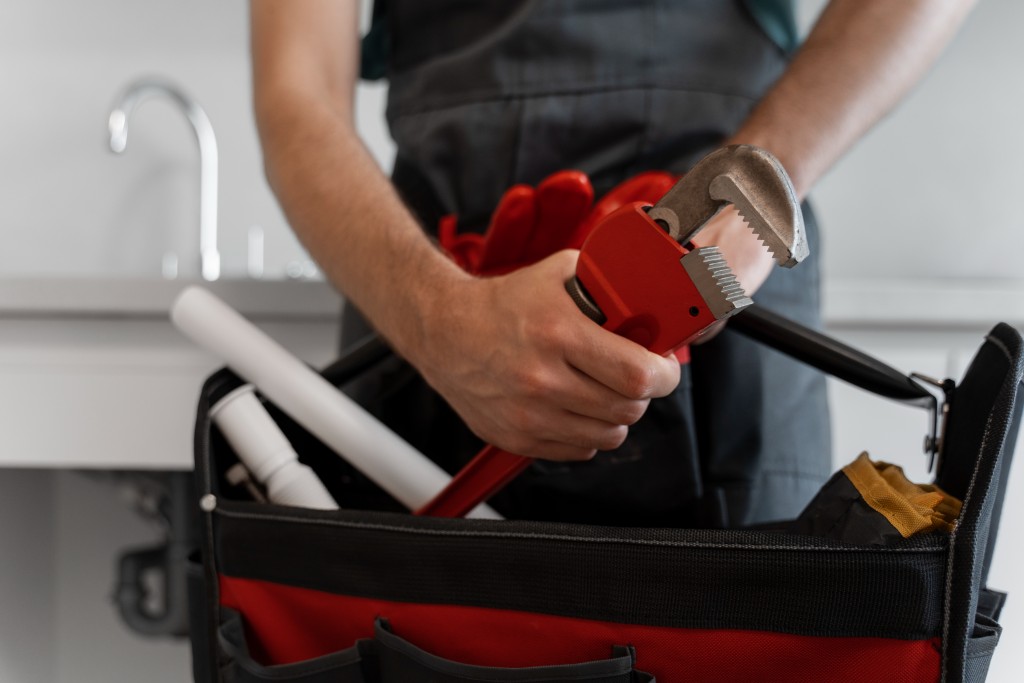
- Inspect visible supply lines and hoses for cracks, bulges, or corrosion at least twice a year.
- Test shut-off valves and main water valve to confirm they operate smoothly and fully close.
- Winterize exposed pipes and exterior faucets before freezing temperatures arrive.
- Check appliances (washing machine, dishwasher, water heater) for leaks and replace flexible hoses every 5–7 years.
Following a regular maintenance cadence reduces the chance of unexpected failures and makes detection of new leaks quicker and less costly.
What Are the Best Practices for Plumbing Maintenance?
Consistent maintenance centers on inspection, timely replacement of wear-prone parts, and seasonal adjustments that match local climate conditions to prevent pipe stress and failures. Best practices include documenting inspection findings, replacing rubber hoses on appliances proactively, and scheduling professional plumbing inspections when you detect pressure swings or minor leaks that recur. Maintaining accessible shut-off valves and labeling them speeds emergency responses, while keeping drain traps clean and avoiding chemical drain cleaners preserves pipe integrity. Professional preventive inspections—especially before extreme weather seasons—catch early signs of deterioration in supply and drain systems.
These maintenance behaviors reduce the frequency of emergency repairs and support long-term system reliability, which leads naturally into how smart leak detectors amplify prevention efforts.
How Can Smart Home Leak Detectors Help Protect Your Property?
Smart leak detectors and automatic shutoff systems provide continuous monitoring and rapid intervention by detecting moisture or unexpected flow and triggering alerts or cutting water supply automatically. There are two main sensor types: spot sensors placed near likely leak points (under sinks, behind appliances) and whole-home flow-based systems that monitor total water use for anomalies. Integrations with home automation platforms enable remote alerts and system shutoffs, which can dramatically reduce water loss during nights or absences. While spot sensors are low-cost and easy to install, whole-home flow systems provide broader protection and faster containment for large or hidden leaks.
Investing in sensor technology complements routine maintenance by catching leaks early and enabling quick mitigation, which lowers repair costs and mitigates mold risk.
What Are the Most Frequently Asked Questions About Plumbing Leak Detection?
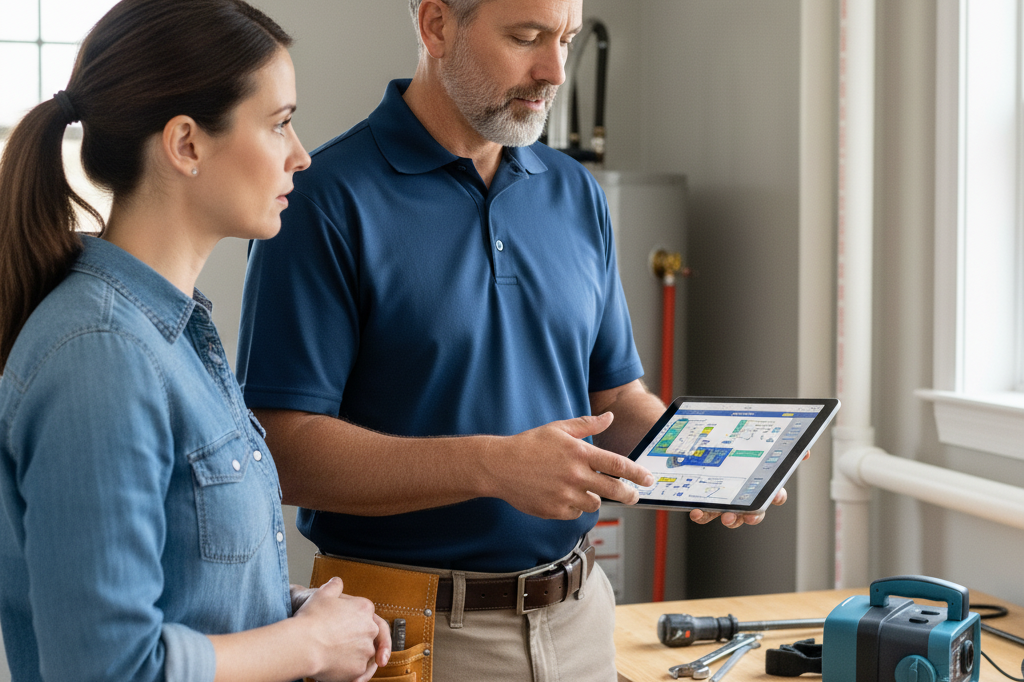
Homeowners commonly ask how plumbers find hidden leaks and what professional detection typically costs; these questions center on methods, time, invasiveness, and price drivers. Professionals combine observation, meter checks, acoustic listening, thermal imaging, and video inspection to reliably locate leaks with minimal excavation. Cost varies widely based on leak type, location, and required equipment; transparent estimates depend on an on-site inspection. The answers below summarize typical professional workflows and cost considerations to help homeowners prepare for a diagnostic visit and budget accordingly.
Below is a concise procedural outline of how professionals typically locate hidden water leaks and what homeowners should expect during the visit.
How Do Plumbers Find Hidden Water Leaks?
Plumbers follow a stepwise diagnostic process: confirm active loss with a water meter test, perform auditory and visual scans, and then use targeted technology—acoustic detectors to triangulate continuous flow, thermal imaging to reveal temperature anomalies, and video inspection to view inside pipes. This layered approach—meter → listen → image → inspect—reduces unnecessary demolition and increases the chance of a precise, minimally invasive repair. Professionals also perform pressure testing and occasionally tracer gas in complex slab or underground cases to validate the leak location before repair. Homeowners should prepare by documenting signs, ensuring access to affected areas, and noting when the problem started to speed the diagnostic process.
Understanding this sequence helps homeowners participate effectively and sets realistic expectations for time and invasiveness of diagnosis.
How Much Does Professional Leak Detection Cost?
Professional leak detection pricing depends on complexity, tools required, and access difficulty; basic acoustic or meter-based diagnosis for visible supply-line leaks is typically less than full slab or underground leak location that requires thermal imaging, tracer gas, or excavation. Factors that increase cost include slab or underground locations, intermittent leaks, the need for multiple technologies, and subsequent repair complexity. The most accurate estimate comes from an on-site inspection because every property’s layout and pipe materials change the time and tools needed. If an immediate emergency exists, prompt professional assessment can reduce total repair costs by preventing escalation and associated structural or mold remediation expenses.
For urgent situations, homeowners can request emergency inspection and repair; Iron Wrench Plumbing offers 24/7 emergency service across Chicagoland, certified technicians, and a satisfaction guarantee, and they prioritize fast stabilization and technology-driven diagnostics to limit damage and expedite permanent repairs. If you’re dealing with an active leak or need a quick quote, contact an expert plumber today to schedule an inspection or get immediate help.

